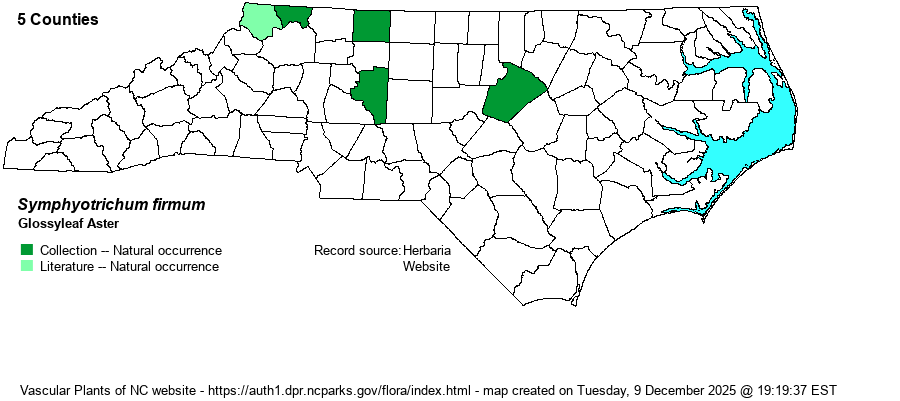| Author | (Nees) Nesom | |
| Distribution | There are a few widely scattered specimens of this taxon, which is very similar to S. puniceum and is often considered a variety of it. The SERNEC collections are for Alleghany, Stokes, Davidson, and Wake counties, and thus includes the Piedmont.
"QC west to ND, south to WV, NC, and IA. Distribution poorly understood because of confusion with S. puniceum" (Weakley 2024). Weakley's (2024) map shows just a "?" for NC, for the Mountains, and thus whether it truly ranges south to NC is uncertain, especially as the Digital Atlas of Virginia website has no entry for this species. | |
| Abundance | Very poorly known, as the specimens are from 60 or more years ago. Photos that were on iNaturalist for NC a few years ago have now been removed, for some unknown reason. Most people would call it as S. puniceum or some other aster. The editors suggest a SU (Undetermined) State Rank. | |
| Habitat | "Peaty wetlands and seepages, fens, wet prairies" (Weakley 2024). | |
| Phenology | Blooms and fruits from August - October. | |
| Identification | Like S. puniceum, which see. Basically, S. firmum has glabrous stems vs. densely pubescent in the latter; and the heads have white to pale lavender rays as opposed to lavender to purple rays in S. puniceum. | |
| Taxonomic Comments | Flora of North America and NatureServe do consider S. firmum as a full species.
| |
| Other Common Name(s) | Swamp Aster | |
| State Rank | [SU] | |
| Global Rank | G5 | |
| State Status | | |
| US Status | | |
| USACE-agcp | | |
| USACE-emp | | |

